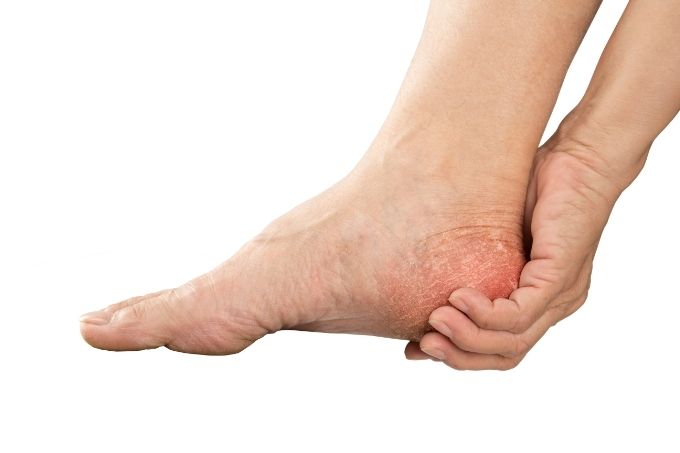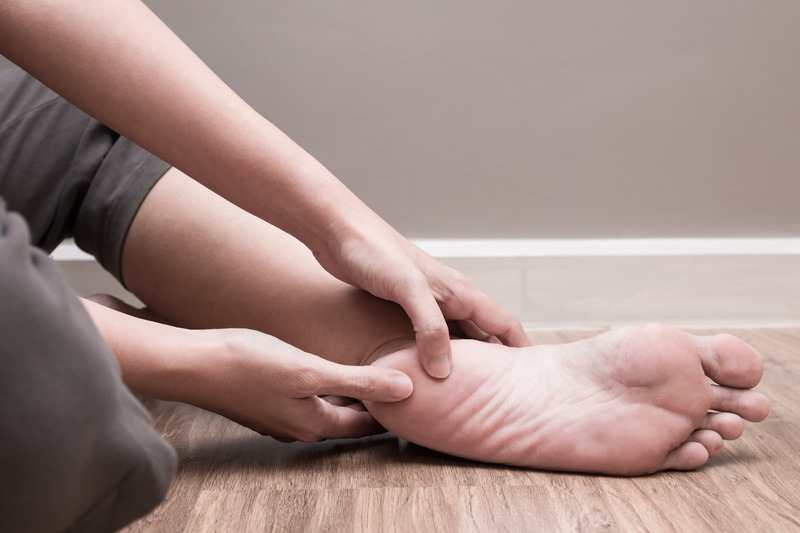
Pain in different parts of the body is nothing uncommon. However, it is not always easy to identify the cause of the pain. Have you felt pain in your heel? You have guessed that it is for gout in the heel.
Almost everyone has heard the term- gout. It is derived from the Greek term- podagra that represents foot grabber. The uric acid build-up is the major cause of gout. As a result, you may find foot swelling, redness, and pain. But, can you get gout in your heel? A thorough discussion will let you learn more about the topic.
Causes of gout in heel
In a few cases, gout attacks your heel and not your big toe. It may also result in foot pain due to the high uric acid level in your body. Several factors can raise the level of this acid in your blood.
Your purine-rich diet
A diet that contains sugar (fructose), red meat, and other similar foods can cause a risk of high uric acid levels. Moreover, regular consumption of alcohol is another factor that triggers your gout risks.
A higher percentage of body fat
With the increased body fat, there is a rise in the uric acid level. Obese persons have a higher risk of uric acid and gout.
Untreated medical issues
Metabolic syndrome, high blood pressure, and kidney disorders can result in higher uric acid levels and gout.
Medications
Medications prescribed for hypertension can increase your uric acid risks. For instance, Thiazide diuretics intended to treat hypertension can cause risks in the future.
Gender and genetic factors
Genetics have a link to your gout attack. While any of your family members have gout in the past, you will be at risk. Moreover, younger men have a higher chance of gout. Women also have uric acid risks after menopause.
Symptoms of gout in heel
- Swelling, redness, and tenderness- these conditions become highly pronounced. You will find them mostly in the part where your ankle coincides with the heel. You may also have symptoms in your big toe.
- Gout symptoms turn up at midnight (in most cases). At this time, the uric acid becomes cool and gets settled, as the activity of your body is low.
- During the gout flare-up, you will feel hot to touch the heel. Moreover, the condition is painful, and you may not be able to wear socks.
- In some cases, it is a less intense pain after the initial gout attack.
- You cannot move comfortably due to the problem in your joints.
Suggested article: The ULTIMATE Guide to Know Everything about Gout Symptoms
Treatments and medications
Non-steroidal anti-inflammatory medications, including ibuprofen, will let you alleviate pain from gout. The most common drug for gout is colchicine, effective for treating the symptoms. But, these drugs can cause adverse effects like diarrhea. Doctors may prescribe a minimal dosage of this medication.
Another option for you is the corticosteroid used in a few gout cases. As there is a risk of high blood sugar and pressure, doctors try to avoid the medication.
You must inform your doctor about every detail of your condition. It will make the diagnosis easier for him. Finally, you must limit your consumption of purine-rich foods. Moreover, you have to maintain healthy body weight to avoid obesity. It is also good to drink coffee and other caffeinated drinks. Vitamin C is also beneficial to treat gout in the heel. These few tips will let you control the condition and prevent discomfort.
Can you get gout in your heel?
You may find that gout attacks mostly happen on your feet. Why does it happen? Uric acid has a high sensitivity to low temperatures. After circulating throughout your body, it reaches your feet. Your feet are away from your heart, and thus, they are the coolest parts of your body. The liquid acid undergoes crystallization and causes pain in your joints. That is why your heels also have a risk of uric acid crystals and gout. When your body cannot efficiently manage your uric level, it can cause gout.
Plantar fasciitis vs gout in heel
It is really confusing to diagnose the problem, as both the conditions cause heel pain. Plantar fasciitis is one of the most common disorders of the heel. But, gout may also affect your heel and result in swelling and pain.
What symptoms indicate that it is plantar fasciitis in your heel?
- Heel pain becomes highly intense in the morning.
- When you do low-impact workouts and stretching, it can trigger pain.
- Dull and sharp pain with swelling and redness.
- You are gaining weight.
- Difficulty in standing and walking- Plantar fasciitis symptoms can be found in both feet.
Suggested article: Plantar Fasciitis Vs Gout – How These Two Are Related?

Other conditions that can cause pain in your heel
Bursae is a condition that makes your heel hurt. However, the use of ill-fitted shoes is the major cause of bursae. The disease may also affect your immune system and damage your joints’ synovial lining. In some cases, diseases like diabetes result in peripheral neuropathy, and thus, you will feel heel pain. Tarsal tunnel syndrome may also cause an ache in your heel.
Conclusion
Thus, there may be multiple reasons behind your heel pain. Without a proper diagnosis, you cannot make the right decision. Talk to your physician before taking the effective medications.
Suggested articles:
– Gout in Knee – Treatment, Causes and Preventive Steps
– Gout in Neck – Can you Get Gout in Your Neck?
– 15 Triggers of Gout – What Causes Gout?
– Gout vs. Bunion – The Difference Between Gout and Bunion
The Gout Eraser™: The all-natural guide for permanent gout removal
The Gout Eraser™ is a short, to the point guide on how to reverse gout symptoms without ever leaving your home. The guide goes into extensive detail on exactly what you need to do to safely, effectively and permanently get rid of gout, and you are GUARANTEED to see dramatic improvements in days if not hours.
To learn more about The Gout Eraser™ system, check out the following free video presentation: The Gout Eraser™






Why didnt article say what types of medication that could be perscribed ???